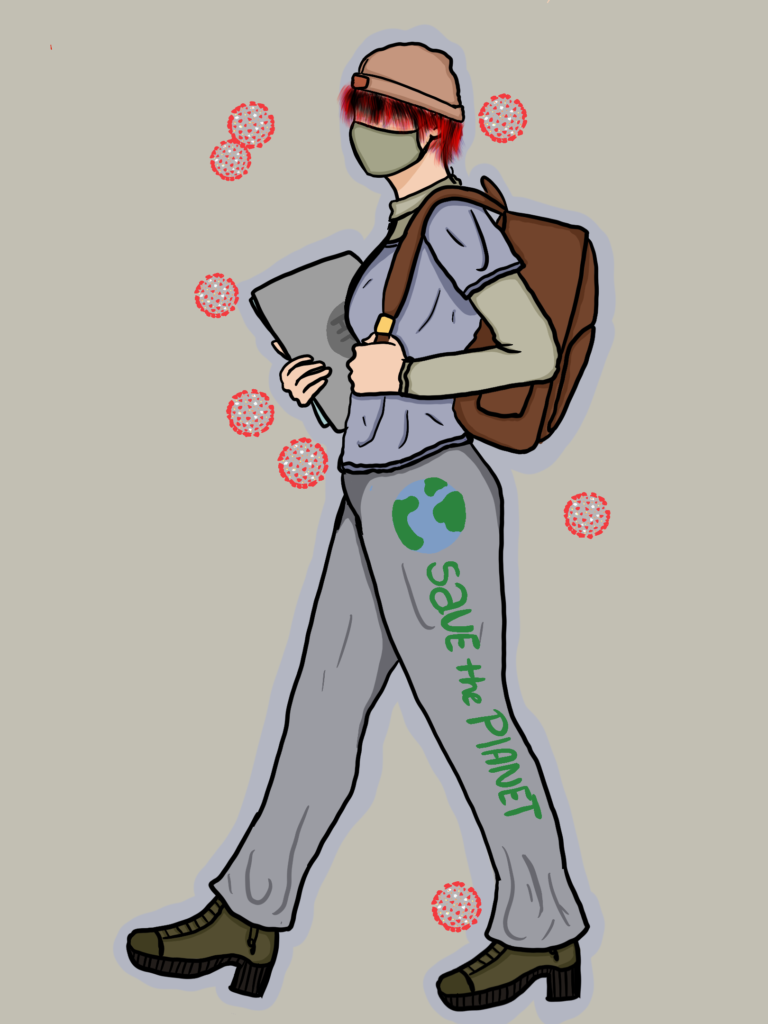Lessons Learned from the Pandemic: The Schools We Need
(Education Part III)
I have been writing on this topic for three months, finding the subject compelling but daunting. So daunting that I have stopped twice, concluding two other blog posts on education without yet sharing recommendations. In Education Part I, I wrote a Valentine’s message to all the people across the country who deserve our gratitude during distance learning. Hearts and flowers to all. In Education Part II, I argued that the schools our kids return to need to be different than the ones they left abruptly last spring—and that this provides us with a great opportunity. I concluded that second blog post on the day of the George Floyd case verdict, part of my reticence to make my recommendations yet simply the enormity of the need for difference.
I have taken more time to think about the recommendations I had in mind and am ready to share them. I would love to see lots and lots of people across the country be part of a grand conversation about the schools we need going forward. What do our kids need? What does our country and world need?
This is my offering for that conversation, three ideas for needed changes that keep coming back to me over and over. Let me take these recommendations in turn, for each, proposing a key change and following that with some What ifs, What if we did even more?
An Assessment Change
When I was working on my Master’s degree, I read about William Glasser’s Schools without Failure. He recommended a schoolwide approach to creating a success-orientation. Recently, I have been thinking so much about how we instead communicate failure messages to kids. There is concern that there are more Fs, more failing grades, during distance learning. But I wonder if we are focusing on the right reason for concern. Yes, this may be an indication of schooling being difficult for kids and families, of the need to go back to schools.
But frankly, I am worried that we as educators give Fs at all, failing grades, so easily interpreted as you are a failure at science or math, maybe even, you are a failure period. How can this possibly be the message we want for kids? Ever? During distance learning? In the future when we want to entice missing kids back to school?
Recommended change: Eliminate Fs.
This can be simple to do, and something we can do pretty quickly. It would be a highly meaningful symbolic act. Yes, words do matter. Get rid of the F for Failure (even if the five-part grading system is maintained at least in the short term).
And what if?
And what if we not only eliminated Fs but abandoned the traditional A-F grades for classes entirely, recording individual progress toward key learnings instead? And what if this was done in such a way that a student could return to a class’s curriculum and add to that progress?
What if we take another look at what are “essential skills” based on the challenges before us now? Reading, writing, applying scientific method, mathematical problem solving, using technology, for sure; maybe perspective taking, design and creation, collaboration through conflict? What if work samples documenting progress in these areas replaced traditional grades entirely? What if we no longer tried to layer this authentic assessment on top of class grades resulting in diminishing focus and overwhelming both kids and teachers?
What if we took the opportunity to rethink all this for K-12 as state departments of education must rethink state assessments and higher education must rethink admissions? What if our three huge systems worked in concert now for more meaningful documentation of progress, increased opportunities for education over a lifetime, a success- orientation for diverse people? What if the joint messages were: You can do important things, it’s never too late, learning never ends?
A Curriculum change
When I was a principal in the Eugene School District, Betty Shoemaker of the Instructional Services Department was a national leader in promoting a concepts-based integrated curriculum. She explained how that aligned beautifully with student assessment. I think of that general approach now, when schools must aid the younger generation with the times we’re in.
Our kids are going back to school when the world surrounding their schools has changed. Pandemic. Calls for social justice. Changing workplaces. Political division. Youth activism. New efforts to halt climate change. We have to help them with skills for those realities.
We can’t kid ourselves. They may go back with a new outfit and new backpack as usual, many wanting to simply connect with other kids and their teachers. But their schools are microcosms. Some families will wear masks while others question them, some will get behind climate change efforts and others will question the need, some will call the same event a protest and others, a riot.
Current controversies will affect class discussions in science and social studies and homerooms. But even more important, kids want to help, to do. And most important of all, when they leave school they will be a generation with tremendous challenges before them, complex problems to address through intention, intellect, and skill.
Recommended change: A Project-Based, Integrated Curriculum on Current Themes.
I propose that there be at least one schoolwide theme per year around a key question, emphasizing essential skills, looked at from cross-disciplinary perspectives, involving parents, and culminating in a project that makes a contribution to the school/community.
Key questions can vary by age level of the students and by the readiness of the school communities. Examples I have thought of:
1. What have we learned during the Pandemic?
2. What should we be learning in 2021 and beyond?
3. What makes a strong, safe community?
4. What does a democracy ask of us?
5. What is “justice for all”?
The question doesn’t matter nearly as much as the fact that it is relevant to the times, requires everyone to think outside of strict subject matter lines and beyond their own viewpoints. Students can demonstrate their abilities with essential skills. Every discipline can help students with alternate perspectives– through a short story, graphs and statistics, historical documents, a painting, a piece of music, video and film, language used in other parts of the world, book and online research. Students can interview their family and community members. They can design and create something important together.
And what if?
What if we start simple, but ultimately take on gender equity, historic racism, climate change, gun control by building confidence that differences of opinion can be handled respectfully?
What if over time more and more of the curriculum is integrated across subject matter fields? What if teachers can experience the energy and motivation that come from team teaching with colleagues in different fields?
What if we added some study of philosophy and ethics to the standard K-12 curriculum so that students find ways to talk with others about alternate viewpoints on what is true? what is right?
What if the school curriculum can provide a model for students preparing for a world where problems are complex and require cross disciplinary thinking, seeking common ground, and cooperating toward desirable goals and the common good?
A People change
I wrote about my early years in a high school that divided the student body into “houses” and within them, advisory groups. The idea was to decrease anonymity for students in a large high school. Each teacher had an advisory group, a mix of kids that changed annually as new students entered, but with students staying for all their high school years. I made home visits, monitored attendance and grades, designed group exercises to build community and increase communication skills, met with my group daily, often talking with a student individually during that time.
I think this advisor experience made a real difference in how I understood the roles of a teacher and a real difference for kids and their parents. I remember to this day a parent I kept calling sort of to no avail, eventually saying to me, You know I finally realize that you are calling because you care about my child. Breakthrough! Anything is possible when we can work in partnership, home and school.
But relationships take time, to know parents and serve the array of needs of very different young people. At the same time, one student may need to be lured back to school after a pattern of skipping; another, a reference to an elite college; a third, encouragement to share a beautiful painting her art teacher has never seen; another asked, Did you know there’s a new book by that funny author you love?
And knowing a student well can’t happen when a teacher has a big student load. And it doesn’t happen in a short period of time.
Various strategies have been used over the years that help ensure caring adults in the lives of young people with different interests and needs. Self-contained classrooms. Homerooms. Advisor-advisee groups. Cohort learning. Boys & Girls Clubs. Sports, theatre, band and choir. Counselors and social workers. Mentors from the business world. Lunch buddies. Volunteer reading assistance. In combination, these have lifted up so many young people and will continue to do so.
But right now Every Single Student in the US is affected by the Pandemic, and students are returning to school in a world that got much more complicated in their absence. This is a time that Every Single Student could use a special adult as a caring helper.
Recommended change: A Helping Adult for Every Child
I have said that some needed changes can start the moment the doors to school reopen and others can wait for more planning time. This is a change that can easily start small. Start with the tutoring focus. Recruit volunteers to meet just two needs to begin with: Students teachers identify as most needing academic support. Children parents identify as needing academic support. And by academic support, this might be a bit beyond classic tutoring but also helping reassure a child who has lost confidence that s/he’ll be just fine.
The process could be as simple as teachers recruiting at the classroom level, then asking interested adults to go through the normal background check established by the district.
And what if?
What if that initial plan is expanded beyond just tutoring to support for the “whole child”?
What if this is expanded to a special helping adult for every child?
What if the initial plan is expanded beyond the immediate or even the school year, to an adult paired with a child on a more long-term basis?
What if we look way beyond the school community for these adults, but to community organizations? What if this included direct appeals to the many organizations advocating on behalf of LGBTQ , special needs, and immigrant communities, people of color? What if a community organization or two even sponsored this effort after initial planning with the district?
What if community folks were assured that past experience in a school setting is not as important as being a caring human being? That specific credentials are not as important as being able to listen and ask good questions?
What if we took all the current national concern about a return to school and directed it at supporting individual children? Certainly they will need different things. This could be seeking out some kids who have not been involved in distance learning, reaching out to them in their neighborhoods, always believing in kids when they don’t believe in themselves, helping them create a homework plan when the work seems too much, coaching them through a particularly difficult assignment, pointing them toward enrichment opportunities, talking about the future with them, work and school… For some kids this may turn out to be the most important adult in their life; for others, it will be a welcome addition to family.
This idea of a tremendous national volunteer effort to support children and teens returning to school after the Pandemic–no single effort seems more potentially powerful to me. Personally, I think this will be my new purpose going forward. And I know there are many like me who want to find a direction and meaning as we work to emerge from the Pandemic in a positive, hopeful way. What a difference we could make!
I end this post with another digital art piece from my granddaughter. She is one of the many great kids returning to school now. Through her art I can summarize my main points over the entire Education Series. Thank you to absolutely everyone supporting students through distance learning. As we return to schools, we need some changes both for the students and our society. This provides a real opportunity to be on the side of building back better. Let’s talk. Let’s plan. Let’s volunteer. And let’s be truly inclusive in this effort to reimagine the schools that are for us all.




